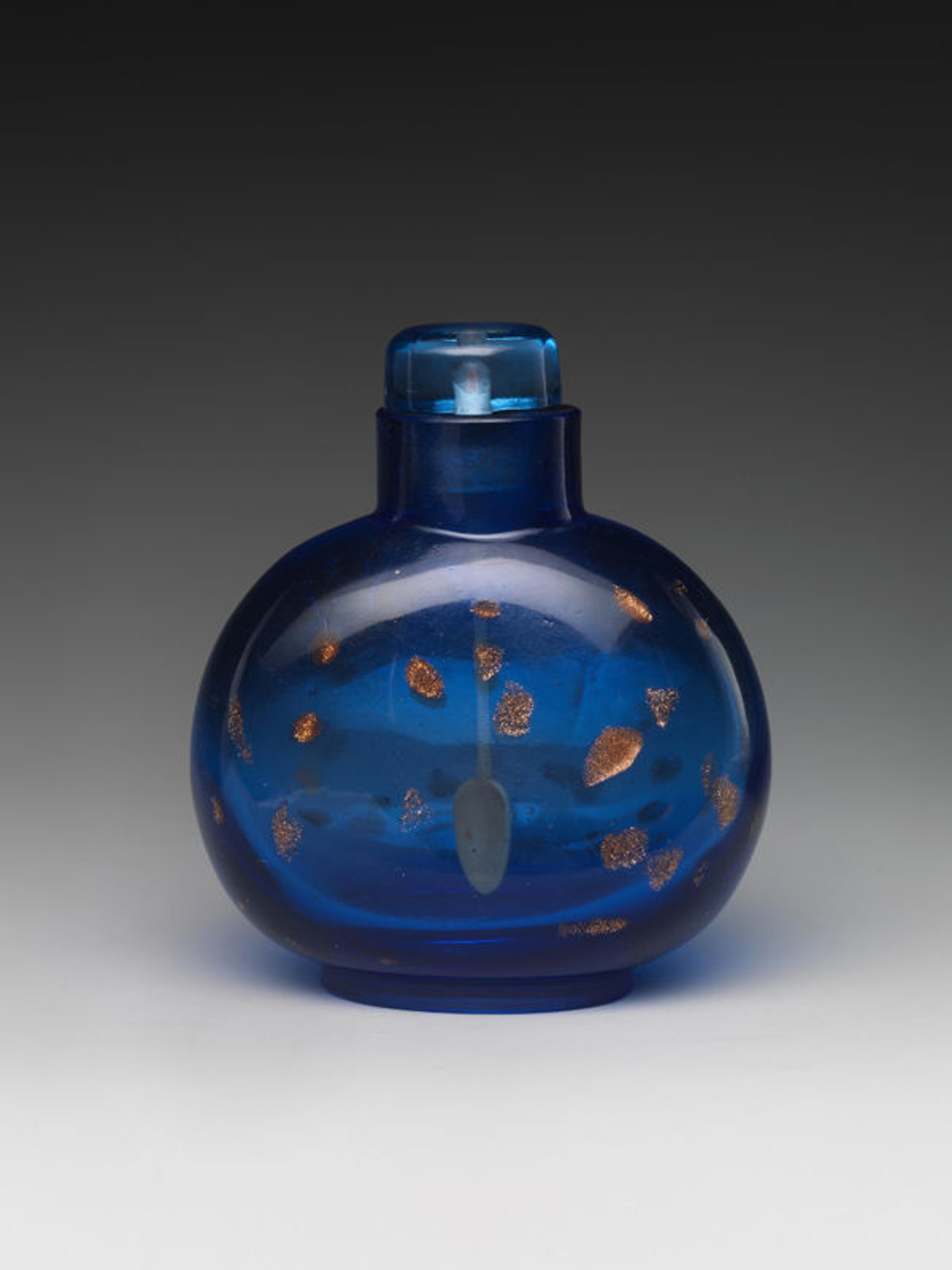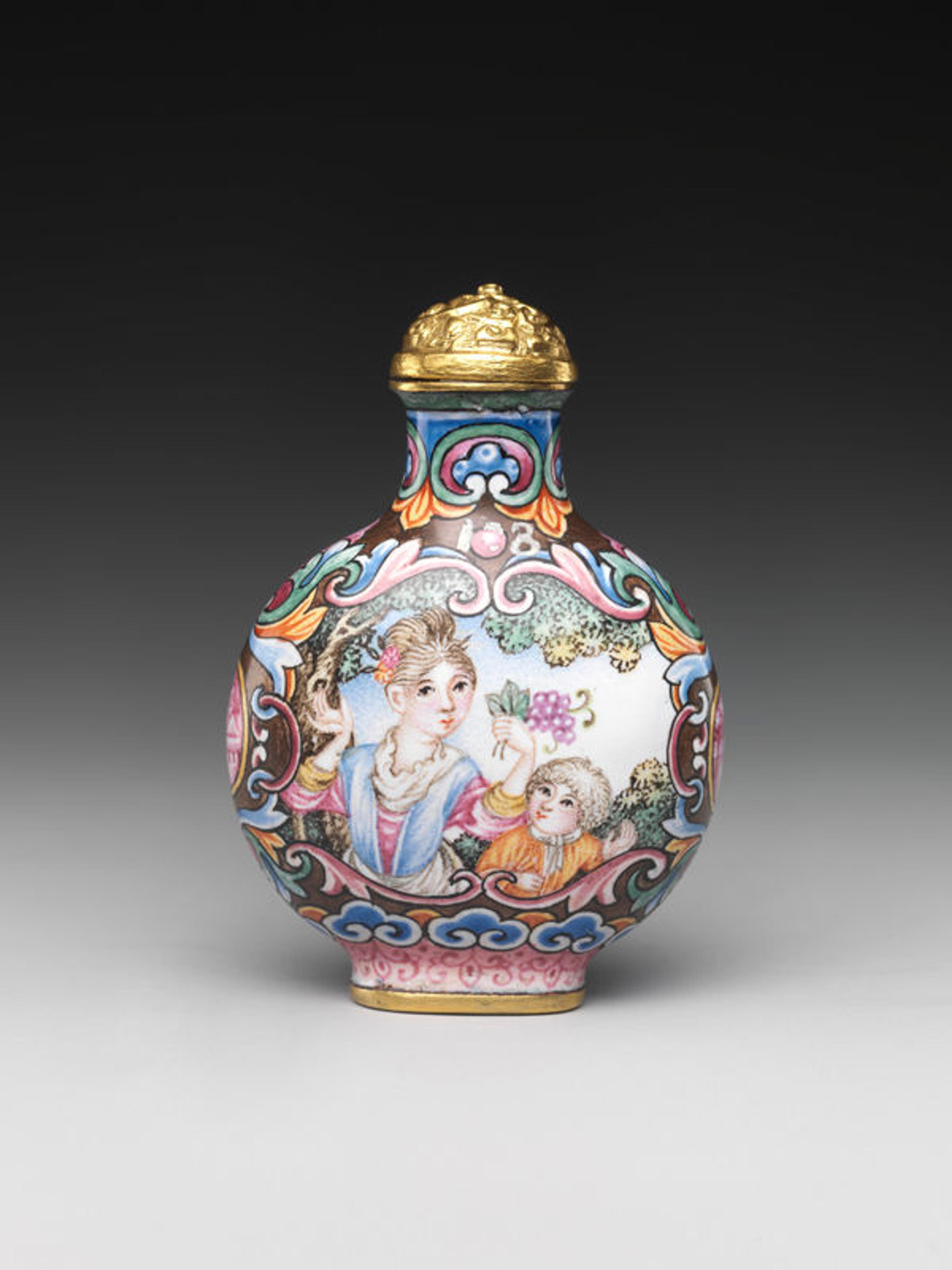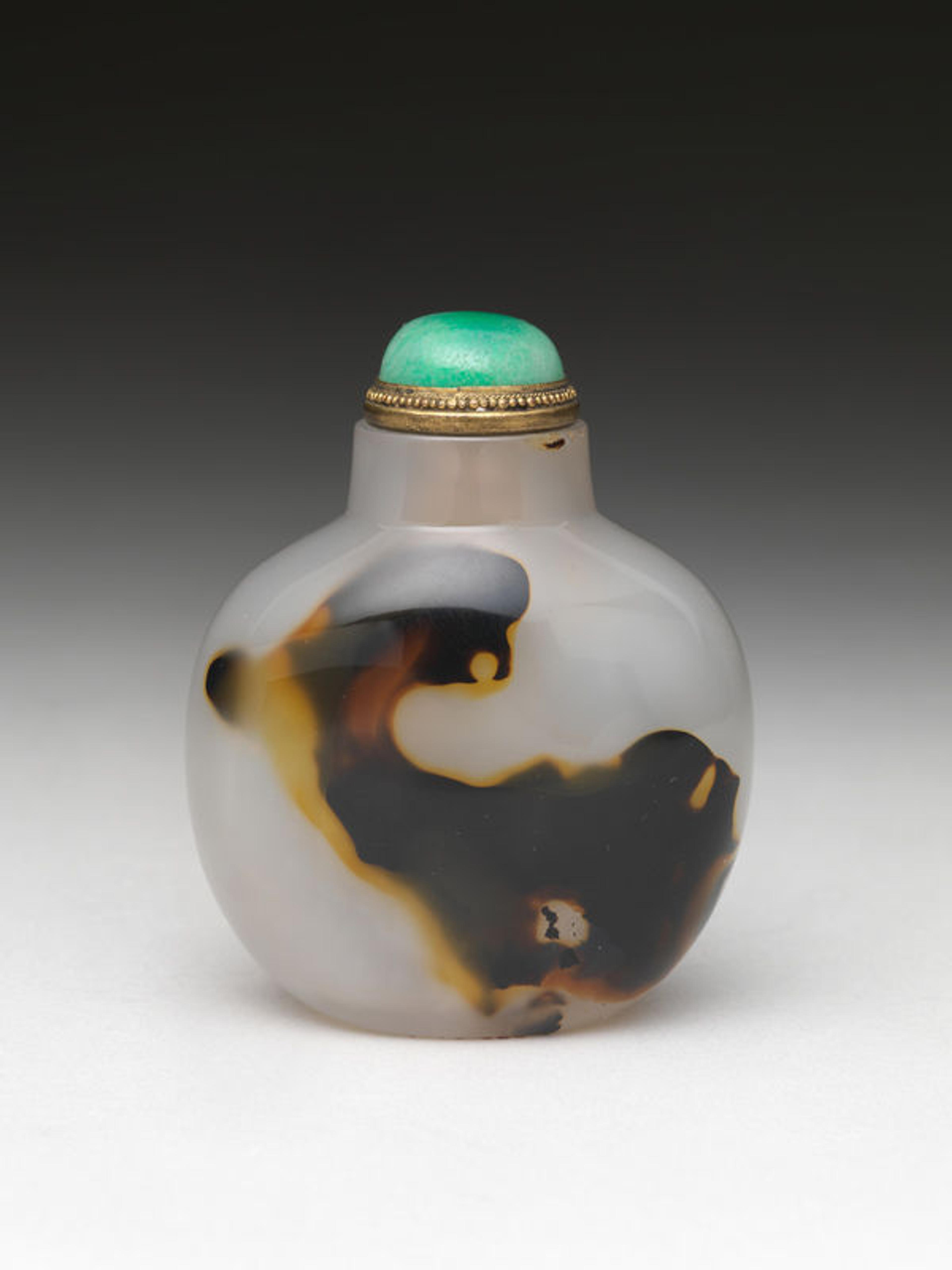
Snuff Bottle with Gold Speckles. Qing dynasty (1644–1911), late 18th century. Blue glass with glass stopper. The Metropolitan Museum of Art, New York, Bequest of Edmund C. Converse, 1921 (21.175.266a, b)
«The current exhibition Small Delights: Chinese Snuff Bottles (on view through June 15, 2014) is drawn entirely from the Museum's extensive collection, and features many works that haven't been shown in decades. These exquisite miniatures not only illustrate the extraordinary technical virtuosity and refined aesthetic sensibility achieved by Qing craftsmen, but also provide a window on life and culture in late imperial China.»
Snuff, a mixture of finely ground tobacco leaves and aromatic herbs and spices, was introduced to China by European missionaries, envoys, and merchants in the second half of the seventeenth century. With its medicinal and stimulating effects, it soon caught on with officials and even the emperor of the Qing dynasty (1644–1911). The increasing use of snuff led to the making of snuff bottles, small containers with a corked stopper that were easily portable and airtight to preserve freshness and flavor.

Snuff Bottle with European Woman and Child. Qing dynasty (1644–1911), Qianlong mark and period (1736–95). Painted enamel on copper. The Metropolitan Museum of Art, New York, Bequest of Edmund C. Converse, 1921 (21.175.314a, b)
The use of snuff spread slowly and steadily, and by 1800 it reached practically every level of society in the vast Chinese empire. Snuff and its bottles became an indispensable part of social interaction. While they were used as domestic ornaments, personal adornments, expensive gifts, or rewards, these bottles also came to manifest social standing and refined taste.

Snuff Bottle. Qing dynasty (1644–1911), late 18th–early 19th century. Chalcedony. The Metropolitan Museum of Art, New York, Bequest of Benjamin Altman, 1913 (14.40.486)
Small as they are, snuff bottles hold a unique place in the rich history of Chinese art. The broad range of materials, techniques and artistic styles found in these miniature masterpieces represent almost every art form developed during the five millennia of Chinese civilization, including stone, porcelain, ivory, lacquer, metalwork, glass, and even painting and calligraphy. Some of the techniques and styles also reflected the frequent contact between China and the West.